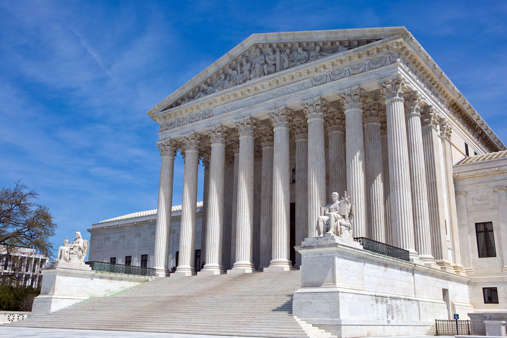On Dec. 20, 2012, the EPA Administrator signed a final rule that determines what Clean Air Act standard applies to units that combust secondary materials (as opposed to traditional fuels or virgin ingredients): Identification of Non-Hazardous Secondary Materials That Are Solid Waste (NHSM Rule). This NHSM Rule is important because if EPA determines that a fuel is a waste, then the combustion unit must meet the Final Emissions Standards for Commercial/Industrial Solid Waste Incinerators (CISWI Rule) (also signed December 20)—which are generally more stringent than standards applicable to boilers.
If EPA determines that a fuel is not a waste, then the combustion unit would be regulated under the applicable MACT standard, three of which also were revised on December 20: Final Emission Standards for Area Source Industrial, Commercial, and Institutional Boilers; Final Emission Standards for Major Source Industrial, Commercial, and Institutional Boilers and Process Heaters; and the National Emission Standards for Hazardous Air Pollutants for the Portland Cement Manufacturing Industry and Standards of Performance for Portland Cement Plants.
Since 2000, EPA has been attempting (unsuccessfully) to distinguish between wastes and non-waste fuels to place combustion units in the appropriate regulatory category. In the 2000 CISWI Rule and the 2005 CISWI Definitions Rule, EPA said that units that combust waste for energy recovery are not CISWI units. EPA used this determination to identify the best-performing incinerators when developing the 2000 CISWI Rule and the best performing boilers when developing the 2004 Boiler MACT Rule. In 2007, the D.C. Circuit rejected that interpretation and vacated both the 2005 CISWI Definitions Rule and the 2004 Boiler MACT Rule. Natural Resources Defense Council v. EPA, 489 F. 3d 1250, 1257–61 (D.C. Cir. 2007). In 2011, the D.C. Circuit also vacated part of the Portland Cement MACT, because EPA had placed some cement kilns in the wrong regulatory category. Portland Cement Ass’n v. EPA, 665 F.3d 177, 184-85 (D.C. Cir. 2011)>
EPA tried to resolve this issue with the first NHSM Rule, promulgated in March 2011. “Identification of Non-Hazardous Secondary Materials That Are Solid Waste,” 76 Fed. Reg. 15456 (Mar. 21, 2011). However, EPA again failed to establish clear and legally defensible criteria for distinguishing between wastes and non-wastes, and agreed to reopen this rule. EPA proposed changes to the NHSM Rule in December 2011 and finalized these changes on December 20, 2012.
In the final NHSM Rule, EPA maintained its March 2011 regulatory structure. That is, a secondary material that is combusted is a waste unless the operator can demonstrate that the material meets certain criteria, which are intended to show that the combustion is a legitimate use of the secondary material as a fuel or an ingredient and not waste disposal.
For materials combusted by the generator as fuels, these “legitimacy” criteria allow a self-evaluation of whether the materials are managed as a valuable commodity, have sufficient heating value, and contain Clean Air Act pollutants at levels comparable to or lower than a traditional fuel that the combustion unit is capable of burning.
For secondary materials that are combusted by third-parties (not the generator) as fuels the materials must meet the above-listed “legitimacy criteria” and in addition must either be processed into a non-waste by removing contaminants or EPA must grant a petition determining these materials are non-wastes.;
For materials combusted as an ingredient, in lieu of evaluating heating values, the legitimacy criteria consider the contribution made by the secondary material to a production or manufacturing process that results in a valuable product or intermediate, and in lieu of evaluating inputs, the contaminant comparison is made by comparing the product produced using secondary materials to products made with virgin materials. Materials meeting the ingredient legitimacy criteria can be combusted by the generator or by third-parties following a self-evaluation of the legitimacy criteria, without the need for processing or a petition.
In the December 2012 NHSM Rule, EPA established an additional mechanism to identify non-waste fuels: a categorical determination by rule. Under this categorical determination, EPA may consider any relevant factor and can list a material as a non-waste fuel even if it does not meet one or more of the legitimacy criteria. A person can combust the listed fuels without making an individual determination that the combustion is legitimate. This mechanism does not apply to secondary materials used as ingredients.
EPA has already determined in the December 2012 NHSM Rule that each of the following four categories of materials are not wastes when combusted: (1) scrap tires that are not discarded and are managed under the oversight of established tire collection programs, including tires removed from vehicles and off-specification tires; (2) resinated wood; (3) coal refuse that has been recovered from legacy piles and processed in the same manner as currently generated coal refuse; and (4) dewatered pulp and paper sludges that are not discarded and are generated and burned on-site by pulp and paper mills that burn a significant portion of such materials where such dewatered residuals are managed in a manner that preserves the meaningful heating value of the materials.
The preamble to the December 2012 NHSM Rule also identified construction and demolition wood, paper recycling residuals, and, with more data, railroad ties, as good candidates for future categorical listing as non-waste fuels, and promises to begin a rulemaking to list these materials in the near future. EPA also may include treated wood in its rulemaking, as well as any other material for which EPA receives sufficient information to make the non-waste determination.
EPA did not agree to categorically exclude off-specification used oil as a non-waste fuel, but agreed that such oil could be a non-waste fuel if it is combusted in a unit that can also combust coal, allowing a comparison between the level of Clean Air Act pollutants in the used oil to the levels in coal when determining if the combustion meets the legitimacy criteria.
In the revisions to the CISWI Rule, EPA also took steps to clarify that gaseous material is not a waste when it is combusted, unless it is contained in a container when that combustion takes place. This clarification was important for the continued use of landfill gas, fuels developed from the gasification of wastes and other secondary materials, and even the normal practice of combusting gases in air pollution control equipment.
Existing combustion units have three (3) years to come into compliance with the Boiler MACT standard (with the possibility of a 4th year if granted by the state permitting authority) and up to five (5) years to come into compliance with the CISWI standards. But, due to long lead times for planning, permitting and construction, it is important to understand now whether a unit combusts a fuel or a waste. If an operator inadvertently combusts a waste after the compliance deadline for the CISWI Rule, the unit would immediately become a CISWI unit and be regulated as such for six months. For many units this would effectively mean the unit must shut down for six months. A unit also becomes a CISWI unit if it combusts a secondary material and fails to keep a record demonstrating that the material is non-waste. So, for operators of combustion units that burn secondary materials, or fuel derived from secondary materials, the consequences of these rules are great—and units and their fuels need to be evaluated against these regulatory standards sooner than later.
EPA has provided many pages of preamble language that offer further guidance on making a determination whether a material is a fuel or a waste, but the criteria and process are less than clear and transparent. At Barnes & Thornburg, we have been helping clients navigate these issues and present non-waste fuel arguments to EPA.
For more information, contact the Barnes & Thornburg attorney with whom you work, or one of the following attorneys in the firm’s Environmental Law Department: Anthony Sullivan at tony.sullivan@btlaw.com, 317-231-7472; Michael Elam at michael.elam@btlaw.com, 312-214-5630; Michael Scanlon at michael.scanlon@btlaw.com, 317-231-7387; Timothy Haley at timothy.haley@btlaw.com, 317-231-6493; Joel Bowers at joel.bowers@btlaw.com, 574-237-1287; and Charles Denton at charles.denton@btlaw.com, 616-742-3974.
© 2013 Barnes & Thornburg LLP. All Rights Reserved. This page, and all information on it, is proprietary and the property of Barnes & Thornburg LLP. It may not be reproduced, in any form, without the express written consent of Barnes & Thornburg LLP.
This Barnes & Thornburg LLP publication should not be construed as legal advice or legal opinion on any specific facts or circumstances. The contents are intended for general informational purposes only, and you are urged to consult your own lawyer on any specific legal questions you may have concerning your situation.













/Passle/6488d4630e7e25c9ac9f834a/MediaLibrary/Images/2024-07-18-19-15-33-047-669969d52008239f764a11af.png)


/Passle/6488d4630e7e25c9ac9f834a/SearchServiceImages/2024-07-17-15-17-44-967-6697e0980752df56d2441ada.jpg)
